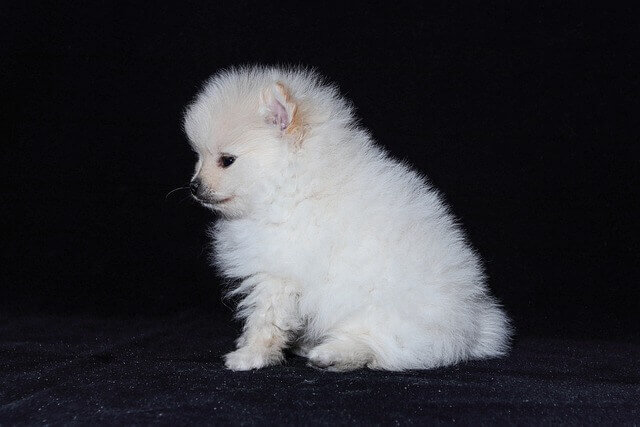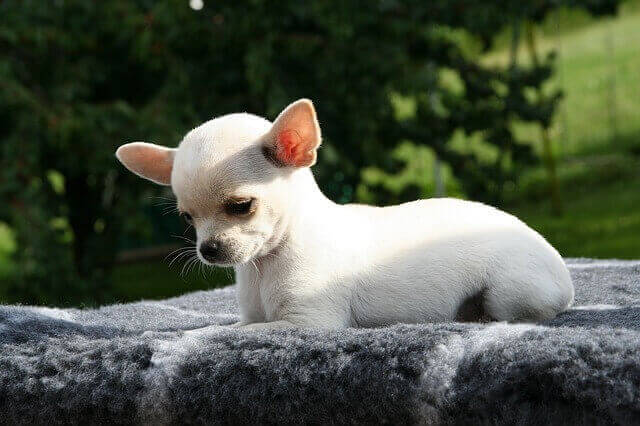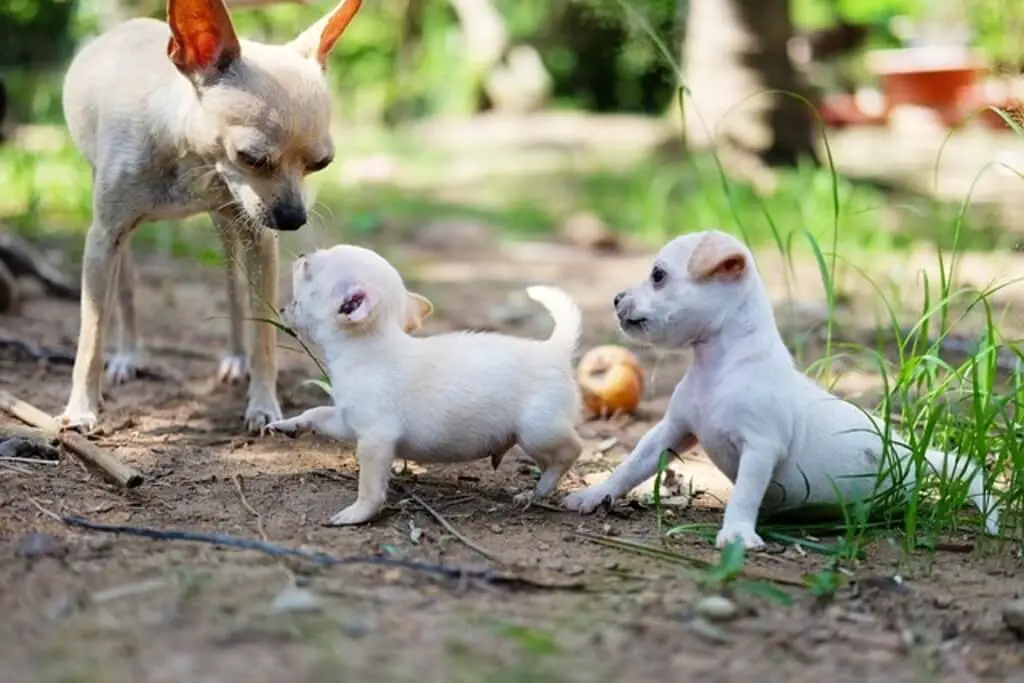You’re standing at the crossroads of tiny dog destiny, aren’t you? On one side, there’s a fluffy Pomeranian that looks like someone shrunk a lion and gave it an attitude problem. On the other, a Chihuahua with eyes bigger than its entire head and the confidence of a dog ten times its size. Both weigh less than your laptop, but somehow manage to have personalities larger than most Great Danes.
I’ve spent years around both breeds, and honestly, choosing between a Pomeranian vs Chihuahua is like choosing between two different types of chaos wrapped in adorable packages. My friend Maria has a Chihuahua named Paco who thinks he’s a Rottweiler, while my cousin owns a Pom called Gizmo who believes he’s the neighborhood mayor. Watching these two interact at family gatherings has been like observing a masterclass in small dog politics.
Size and Physical Appearance Battle
Weight and Height Differences
Pomeranians typically weigh 3-7 pounds and stand about 6-7 inches tall, while Chihuahuas range from 2-6 pounds and reach 5-8 inches in height. Yes, you read that right, Chihuahuas can actually be smaller than Poms, which seems impossible when you consider their massive personalities.
The weight difference might seem minimal on paper, but in practice, it can be significant. Paco weighs barely 3 pounds and can literally fit in Maria’s purse (though he prefers to walk and show off his swagger). Gizmo, at 6 pounds, feels substantially more solid when you pick him up, like the difference between holding a feather pillow versus a small bag of flour.
Body Structure and Build
Pomeranians have a compact, square-shaped body with a sturdy build that gives them that confident, fox-like appearance. Their double coat adds to their overall fluffiness, making them look like animated stuffed animals that somehow learned to walk and develop opinions.
Chihuahuas come in two varieties: the apple head (round skull) and deer head (longer snout). Their body is longer than it is tall, creating a more rectangular silhouette. Despite their tiny size, they have surprisingly well-proportioned bodies that scream “I may be small, but I’m perfectly engineered for maximum attitude.”
Coat Types and Colors
Here’s where things get interesting. Pomeranians sport a thick double coat that comes in numerous colors including orange, black, white, brown, and rare blues or lavenders. Their coat stands away from their body, creating that iconic puffball appearance that makes strangers want to squeeze them (much to the Pom’s often dignified dismay).
Chihuahuas offer more coat variety with both smooth (short-haired) and long-coated options. Colors range from fawn and chocolate to black, white, and various combinations. The smooth coat Chihuahuas look sleek and streamlined, while long-coated ones can rival Pomeranians in the fluff department.

Personality Showdown: The Battle of Tiny Titans
Confidence and Attitude Levels
Both breeds suffer from what I call “small dog syndrome,” but they express it differently. Pomeranians carry themselves like tiny royalty who expect the world to revolve around them. Gizmo literally struts when he walks, tail up, head high, like he’s leading a parade that only he can see.
Chihuahuas have more of a “Napoleon complex” with an edge of fierce loyalty mixed with suspicion. Paco appointed himself as Maria’s personal bodyguard and takes the job seriously. He’ll challenge dogs twenty times his size without hesitation, which is both admirable and terrifying to watch.
Energy and Activity Requirements
Pomeranians are energetic but in bursts. They’ll have intense play sessions followed by long naps in sunny spots. Their exercise needs can largely be met through indoor play, though they enjoy short walks to survey their domain and ensure everything meets their standards.
Chihuahuas tend to have more sustained energy levels and can be surprisingly active for their size. Paco goes on mile-long walks with Maria and still has energy to patrol the backyard afterward. They’re like tiny energizer bunnies with attitude problems.
Social Behavior and Temperament
Pomeranians can be social butterflies when properly socialized, though they often prefer to be the center of attention rather than sharing the spotlight. They’re usually good with children who understand gentle handling, but they won’t tolerate rough play.
Chihuahuas are typically one-person or one-family dogs who can be standoffish with strangers. They’re intensely loyal to their chosen humans but may view everyone else with suspicion. Paco loves Maria unconditionally but treats most other people like potential threats to their relationship.
Grooming Requirements: The Maintenance Reality
Daily Brushing Needs
Pomeranian grooming is a daily commitment thanks to their double coat. You’ll need to brush them every single day to prevent matting and manage shedding. During seasonal coat blowouts, you’ll question whether your Pom is actually a fur-dispensing machine disguised as a dog.
Chihuahua grooming depends entirely on coat type. Smooth-coat Chis need minimal brushing (once or twice a week), while long-coated varieties require daily attention similar to Pomeranians. The good news? Even long-coated Chihuahuas typically have less dense fur than Poms.
Professional Grooming Frequency
Pomeranians need professional grooming every 6-8 weeks for trimming, nail clipping, and thorough cleaning. Many Pom parents opt for “teddy bear cuts” that reduce daily maintenance while keeping their dogs adorably fluffy.
Smooth-coat Chihuahuas can go longer between professional grooming sessions, needing attention mainly for nail trims and baths. Long-coated Chihuahuas require grooming every 6-8 weeks, similar to Pomeranians, but the sessions are usually quicker and less expensive.
Seasonal Shedding Patterns
Pomeranians shed year-round with major seasonal blowouts that will make you question your life choices. Spring and fall shedding seasons require extra brushing and industrial-strength vacuum cleaners. Gizmo’s spring shed could probably stuff a small pillow.
Smooth-coat Chihuahuas shed moderately throughout the year, while long-coated varieties have more noticeable seasonal shedding. The good news is that even heavy Chi shedding is less dramatic than Pomeranian fur explosions.
Health Considerations and Lifespan
Common Breed-Specific Health Issues
Pomeranians are prone to several health conditions:
- Luxating patella (kneecap dislocation)
- Tracheal collapse
- Heart problems
- Eye issues including cataracts
- Dental crowding due to small mouths
- Hypothyroidism
Chihuahuas face their own health challenges:
- Heart murmurs and other cardiac issues
- Hypoglycemia (low blood sugar)
- Dental problems
- Luxating patella
- Hydrocephalus (especially in apple-head varieties)
- Tracheal collapse
Life Expectancy and Aging
Both breeds are long-lived, typically enjoying lifespans of 12-18 years. Pomeranians average 12-16 years, while Chihuahuas often live 14-18 years, making them one of the longest-lived dog breeds. Proper care, good genetics, and regular veterinary attention significantly impact longevity in both breeds.
Size-Related Vulnerabilities
Both breeds are fragile due to their tiny size, but in different ways. Pomeranians’ fluffy coat can hide injuries, making it important to be thorough during health checks. Their double coat also makes them more prone to overheating.
Chihuahuas’ prominent eyes make them vulnerable to injury, and their thin skin means they feel temperature extremes more acutely. FYI, both breeds need protection from larger dogs and careful handling around children.
Training and Behavioral Challenges
House Training Difficulties
Let’s be honest here, both breeds can be challenging to house train. Their tiny bladders mean frequent potty breaks, and both can be stubborn about training. Consistency is absolutely crucial with either breed.
Pomeranians may take longer due to their independent streak, while Chihuahuas can be motivated by their desire to please their chosen person. Either way, prepare for accidents and invest in good carpet cleaner.
Barking and Noise Levels
Pomeranians are alert barkers who feel compelled to announce visitors, strange noises, and suspicious squirrel activity. They’re not usually yappy for no reason, but they definitely have opinions about neighborhood happenings.
Chihuahuas can be more reactive barkers, especially when they perceive threats to their family. Paco has strong opinions about everything from delivery trucks to falling leaves. Training can help manage excessive barking, but you’ll never have a completely silent Chi.
Intelligence and Trainability
Both breeds are intelligent but can be selectively obedient. Pomeranians understand commands but may choose to interpret them creatively. Chihuahuas are smart and can learn quickly when motivated, but they’re also independent thinkers who might decide your suggestions are optional.
Positive reinforcement works best with both breeds, though you’ll need patience and a sense of humor for the training process.
Living Situation Compatibility
Apartment vs. House Living
Both breeds are excellent apartment dogs due to their small size and moderate exercise needs. Pomeranians adapt well to smaller spaces as long as they get daily attention and mental stimulation. Their fluffy coat provides natural insulation for various climates.
Chihuahuas are practically designed for apartment living. They’re happy to be wherever their favorite human is, whether that’s a studio apartment or a mansion. However, they do need warm environments and may require sweaters in cold climates.
Family Dynamics with Children
Pomeranians can be good with older children who understand gentle handling and respect boundaries. Their fluffy appearance often attracts young children, but Poms won’t tolerate tail pulling or rough play.
Chihuahuas are often better suited to adult households or families with older children. Their small size makes them vulnerable to injury, and they may become snappy if they feel threatened or overwhelmed.
Multi-Pet Household Considerations
Pomeranians can coexist with other pets when properly socialized, though they often prefer to be the center of attention. They may get along better with similarly sized dogs or cats who won’t challenge their perceived status.
Chihuahuas often do better with other Chihuahuas or similar-sized dogs. They can be territorial and may not appreciate sharing their human’s attention. Paco tolerates Maria’s cat but makes it clear that he’s the priority pet in the household.
Exercise and Activity Requirements
Daily Exercise Needs
Pomeranians need moderate daily exercise that can often be met through indoor play and short walks. A 20-30 minute walk plus some playtime usually satisfies their activity requirements. They’re happy to be active when you are and nap when you’re busy.
Chihuahuas require similar exercise levels but may have more endurance than you’d expect. Short, frequent walks work well, and many Chis enjoy accompanying their owners on errands (properly secured in carriers, of course).
Mental Stimulation Requirements
Both breeds need mental stimulation to prevent boredom-related behaviors like excessive barking or destructive tendencies. Puzzle toys, training sessions, and interactive play help keep their intelligent minds occupied.
Pomeranians enjoy games that make them feel important, while Chihuahuas often prefer activities that involve their favorite human. Both breeds can excel at trick training when motivated properly.

Cost Considerations and Budget Planning
Initial Purchase and Setup Costs
Pomeranian prices typically range from $1,200-$4,000 depending on bloodlines, location, and coat color. Rare colors like blue or lavender command premium prices, while more common colors like orange or red are usually more affordable.
Chihuahua prices generally range from $800-$3,000 with smooth-coat varieties often costing less than long-coated ones. Apple-head Chihuahuas from champion lines can be expensive, while pet-quality dogs from reputable breeders are more affordable.
Ongoing Care Expenses
Grooming costs vary significantly between breeds and coat types. Pomeranians require more expensive grooming sessions ($60-$100 every 6-8 weeks), while smooth-coat Chihuahuas need minimal professional grooming.
Healthcare expenses can be substantial for both breeds due to their predisposition to certain conditions. Dental care is particularly important and expensive for both breeds due to their small mouths and crowded teeth.
Food and Supply Costs
Small portions mean lower daily food costs, but both breeds benefit from high-quality small breed formulas that often cost more per pound. Special dietary needs related to hypoglycemia or allergies can increase food expenses.
Accessories sized for toy breeds can be surprisingly expensive. However, their small size means toys, beds, and clothes last longer than they would for larger dogs.
Making Your Decision: Which Breed Fits Your Life?
Ideal Pomeranian Owner Profile
Pomeranian parents should be prepared for daily grooming commitment, seasonal shedding management, and a dog who thinks they’re much more important than their size suggests. You’ll need patience for training and tolerance for a dog who has opinions about everything.
If you want a fluffy companion who will make you laugh daily with their dignified attitude and royal demeanor, a Pomeranian might be perfect for you.
Perfect Chihuahua Family Situation
Chihuahua owners should be ready for intense loyalty, protective instincts, and a dog who views the world with healthy suspicion. You’ll need to provide warmth, gentle handling, and understanding of their one-person dog tendencies.
If you want a devoted shadow who will love you unconditionally and alert you to every potential threat (real or imagined), a Chihuahua could be ideal.
Key Questions to Consider
Before choosing between these breeds, ask yourself:
- Do you prefer fluffy elegance or sleek portability?
- Can you commit to daily grooming or do you want lower-maintenance care?
- Do you want a social butterfly or a devoted bodyguard?
- How important is minimal shedding versus personality traits?
- Are you prepared for a dog with strong opinions and the confidence to express them?
Final Thoughts
IMO, both Pomeranians and Chihuahuas make incredible companions for the right owners, but they offer completely different experiences. Pomeranians bring fluffy elegance, dignified attitudes, and impressive grooming requirements to your life. Chihuahuas offer fierce loyalty, portable companionship, and the entertainment of watching a 3-pound dog face down the world with absolute confidence.
Just yesterday, I watched Paco challenge a Golden Retriever at the dog park while Gizmo sat nearby looking like he was judging the entire situation with regal disapproval. That pretty much sums up the difference between these breeds 🙂
The “right” choice depends on your lifestyle, grooming commitment, and what you want in a tiny canine companion. Both breeds will rule your household with iron paws, both require careful handling due to their size, and both will provide years of entertainment and unconditional love.
Whether you choose a fluffy fox or a tiny bodyguard, you’re signing up for life with a dog who has no idea they’re small. And honestly, their confidence and personality make up for any inconvenience their size might create. Just be prepared to become fluent in small dog logic and invest in a good lint roller (or carpet cleaner, depending on your choice).


